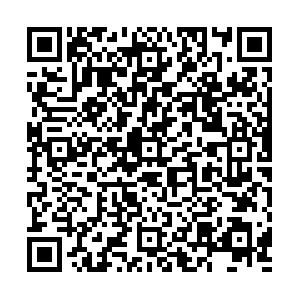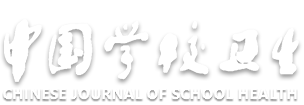Association between the consumption of milk tea beverage and insomnia symptoms among college students
-
摘要:
目的 了解大学生奶茶及其他含糖饮料消费现状和失眠情况,并分析两者间关联,为促进大学生睡眠质量提供参考。 方法 2023年9—11月,采用方便抽样方法从上海市、江西省、湖北省、山西省四省(市)抽取7所高校15 440名大学生进行调查,采用自编问卷和失眠严重程度指数量表分别调查大学生奶茶及其他含糖饮料消费情况和失眠症状。采用χ2检验及Cochran-Armitage趋势χ2检验进行大学生失眠症状单因素分析,运用多因素Logistic回归分析推断奶茶及其他含糖饮料消费与失眠症状的关联强度。 结果 大学生失眠症状检出率为40.83%。每周不同奶茶消费频次和各类含糖饮料(果汁、茶类、奶类、碳酸、乳酸、功能饮料、咖啡)消费频次与大学生失眠症状检出率的趋势均存在关联(χ趋势2值分别为38.38,47.66,74.16,32.44,65.78,38.71,35.94,91.59,P值均<0.01)。多因素Logistic回归分析结果显示,相比无奶茶消费个体,存在奶茶消费行为的大学生失眠症状发生风险均增加(OR=1.24);每周中低频次(1~3,4~5次)奶茶消费大学生相比无奶茶消费大学生失眠症状发生风险更高(OR值分别为1.20,1.54);此外,每次奶茶消费量与大学生失眠症状均存在关联(1 501~2 999 mL,OR=1.22;≥3 000 mL,OR=1.36);其他含糖饮料消费也与大学生失眠症状存在关联(OR=1.10~1.55)(P值均<0.05)。 结论 奶茶及其他含糖饮料消费与大学生失眠症状存在关联。高校应开展饮食健康教育讲座,以改善大学生睡眠质量。 Abstract:Objective To investigate the association between consumption of milk tea beverages and other sugary beverages with insomnia symptoms among college students, so as to the provide reference for promoting sleep quality among college students. Methods From September to November 2023, a convenience sampling method was used to select 15 440 college students from seven universities in Shanghai, Jiangxi Province, Hubei Province, and Shanxi Province. A self-developed questionnaire and the Insomnia Severity Index were used to assess milk tea beverage consumption, other sugary beverages and insomnia symptoms. Univariate analysis of insomnia symptoms among college students was performed using Chi-square tests and Cochran-Armitage trend χ2 tests. Multivariate Logistic regression analysis was conducted for the association between milk tea and other sugary beverage consumption with insomnia symptoms. Results The detection rates of insomnia symptoms among college students was 40.83%. The frequency of consumption of different milk tea and various sugary drinks (juice, tea, milk, sodas, yogurt, functional drinks, coffee) per week was related to the detection trend rate of insomnia symptoms of college students (χtrend2=38.38, 47.66, 74.16, 32.44, 65.78, 38.71, 35.94, 91.59, P<0.01). Multivariate analysis indicated that compared to individuals with no milk tea consumption, college students engaging in milk tea consumption had a significantly increased risk of insomnia symptoms (OR=1.24, P<0.05). Students consuming milk tea at low to moderate frequencies (1-3, 4-5 times per week) showed a higher risk of insomnia symptoms compared to those with no consumption (OR=1.20, 1.54, P<0.05). Furthermore, higher levels of milk tea consumption were significantly associated with insomnia symptoms (1 501-2 999 mL, OR=1.22; ≥3 000 mL, OR=1.36), and the consumption of other sugary beverages were also associated with insomnia symptoms of college students (OR=1.10-1.55) (P<0.05). Conclusions There is a relationship between consumption of milk tea beverage other sugary beverages with insomnia symptoms among college students. Colleges should regularly conduct dietary health education seminars to improve sleep quality among college students. -
Key words:
- Beverages /
- Fees and charges /
- Sleep disorders /
- Mental health /
- Regression analysis /
- Students
1) 利益冲突声明 所有作者声明无利益冲突。 -
表 1 不同人口学特征大学生失眠症状检出率比较
Table 1. Comparison of the detection rates of insomnia symptoms among college students with different demographic characteristics
人口学指标 选项 人数 检出人数 χ2值 P值 性别 男 6 171 2 322(37.6) 43.61 < 0.01 女 9 269 3 982(43.0) 年级 大一 9 040 3 226(35.7) 249.83 < 0.01 大二 3 022 1 432(47.4) 大三 2 066 963(46.6) 大四 1 312 683(52.1) 户籍所在地 城镇 6 457 2 547(39.4) 8.79 < 0.01 农村 8 983 3 757(41.8) 独生子女 是 4 569 1 785(39.1) 8.33 < 0.01 否 10 871 4 519(41.6) 父亲职业 公务员 1 743 685(39.3) 29.37 < 0.01 工人 2 106 861(40.9) 农民 1 788 811(45.4) 公司职员 456 160(35.1) 商人 3 263 1 267(38.8) 其他 6 084 2 520(41.4) 母亲职业 公务员 1 438 571(39.7) 27.10 < 0.01 工人 1 111 441(39.7) 农民 1 655 748(45.2) 公司职员 514 208(40.5) 商人 4 114 1 578(38.4) 其他 6 608 2 758(41.7) 家庭结构 双亲家庭 13 617 5 480(40.2) 16.57 < 0.01 重组家庭 600 272(45.3) 单亲家庭 1 044 474(45.4) 其他 179 78(43.6) 自评家庭经济
状况很差 757 396(52.3) 187.74 < 0.01 较差 2 808 1 403(50.0) 一般 10 183 3 917(38.5) 较好 1 482 514(34.7) 很好 210 74(35.2) 营养状况 消瘦 1 061 433(40.8) 0.70 0.87 正常 10 886 4 433(40.7) 超重 1 982 806(40.7) 肥胖 1 511 632(41.8) 体力活动水平 高水平 3 948 1 578(40.0) 2.64 0.27 中水平 4 379 1 775(40.5) 低水平 7 113 2 951(41.5) 是否经常外卖
消费是 9 959 4 250(42.7) 39.57 < 0.01 否 5 481 2 054(37.5) 注: ()内数字为检出率%。 表 2 大学生奶茶及其他含糖饮料消费情况与失眠症状的关联
Table 2. Association between college students' consumption of milk tea and other sugary beverages and insomnia symptoms
组别 人数 检出人数 χ2/χ趋势2值 是否奶茶消费 是 8 430 3 632(43.1) 39.09 否 7 010 2 672(38.1) 每周奶茶消费频次a ≥6 143 50(35.0) 38.38 4~5 213 130(61.0) 1~3 8 074 3 452(42.8) 0 7 010 2 672(38.1) 每次奶茶消费量a/mL ≥3 000 3 056 1 397(45.7) 56.19 1 501~2 999 4 625 1 958(42.3) 1~1 500 749 277(37.0) 0 7 010 2 672(38.1) 每周果汁饮料消费频次a ≥6 501 209(41.7) 47.66 4~5 660 343(52.0) 1~3 5 390 2 347(43.5) 0 8 889 3 405(38.3) 每周茶类饮料消费频次a ≥6 619 278(44.9) 74.16 4~5 988 485(49.1) 1~3 5 893 2 575(43.7) 0 7 940 2 966(37.4) 每周奶类饮料消费频次a ≥6 723 281(38.9) 32.44 4~5 1 746 816(46.7) 1~3 5 827 2 506(43.0) 0 7 144 2 701(37.8) 每周碳酸饮料消费频次a ≥6 467 188(40.3) 65.78 4~5 655 363(55.4) 1~3 4 630 2 063(44.6) 0 9 688 3 690(38.1) 每周乳酸饮料消费频次a ≥6 468 185(39.5) 38.71 4~5 569 300(52.7) 1~3 3 624 1 630(45.0) 0 10 779 4 189(38.9) 每周功能饮料消费频次a ≥6 405 163(40.2) 35.94 4~5 335 212(63.3) 1~3 1 523 702(46.1) 0 13 177 5 227(39.7) 每周咖啡饮料消费频次a ≥6 525 225(42.9) 91.59 4~5 745 416(55.8) 1~3 2 970 1 386(46.7) 0 11 200 4 277(38.2) 注: a趋势检验为Cochran-Armitage检验;()内数字为检出率/%。P值均<0.01。 表 3 大学生奶茶及其他含糖饮料消费情况与失眠症状的Logistic回归分析[n=15 440,OR值(95%CI)]
Table 3. Logistic regression analysis of the association between college students' consumption of milk tea and other sugary beverages and insomnia symptoms[n=15 440, OR(95%CI)]
自变量 模型1 模型2 是否奶茶消费 是 1.23(1.15~1.31)** 1.24(1.16~1.33)** 否 1.00 1.00 每周奶茶消费频次 ≥6 0.56(0.38~1.83) 0.47(0.31~1.70) 4~5 1.66(1.24~2.23)** 1.54(1.14~2.08)** 1~3 1.18(1.10~1.26)** 1.20(1.12~1.29)** 0 1.00 1.00 每次奶茶消费量/mL ≥3 000 1.37(1.26~1.49)** 1.36(1.25~1.49)** 1 501~2 999 1.19(1.11~1.29)** 1.22(1.13~1.32)** 1~1 500 0.95(0.82~1.11) 0.96(0.82~1.13) 0 1.00 1.00 每周茶类饮料消费频次 ≥6 1.45(1.13~1.87)** 1.55(1.20~2.01)** 4~5 1.08(0.92~1.27) 1.14(0.97~1.34) 1~3 1.10(1.01~1.19)* 1.13(1.04~1.22)** 0 1.00 1.00 每周奶类饮料消费频次 ≥6 0.83(0.67~1.03) 0.90(0.72~1.12) 4~5 1.13(1.00~1.27)* 1.17(1.04~1.32)** 1~3 1.07(0.99~1.16) 1.10(1.02~1.20)* 0 1.00 1.00 每周碳酸饮料消费频次 ≥6 0.94(0.68~1.29) 0.90(0.65~1.25) 4~5 1.43(1.18~1.73)** 1.42(1.17~1.73)** 1~3 1.14(1.05~1.23)** 1.12(1.03~1.22)** 0 1.00 1.00 每周功能饮料消费频次 ≥6 1.00(0.68~1.48) 0.90(0.60~1.33) 4~5 1.53(1.14~2.05)** 1.38(1.02~1.87)* 1~3 0.97(0.85~1.10) 0.95(0.84~1.08) 0 1.00 1.00 每周咖啡饮料消费频次 ≥6 1.37(1.04~1.81)* 1.39(1.04~1.84)* 4~5 1.52(1.28~1.81)** 1.49(1.25~1.78)** 1~3 1.23(1.12~1.34)** 1.23(1.12~1.35)** 0 1.00 1.00 注:模型1未调整混杂因素;模型2调整性别、年级、户籍所在地、独生子女、父亲职业、母亲职业、家庭结构、自评家庭经济状况、是否经常外卖消费因素。*P<0.05,**Pc0.01。 -
[1] YIALLOUROU S R, MAGUIRE G P, CARRINGTON M J. Sleep quantity and quality and cardiometabolic risk factors in Indigenous Australians[J]. J Sleep Res, 2021, 30(2): e13067. doi: 10.1111/jsr.13067 [2] 方必基, 刘彩霞, 尧健昌, 等. 近二十年我国大学生睡眠质量研究结果的元分析[J]. 现代预防医学, 2020, 47(19): 3553-3556.FANG B J, LIU C X, YAO J C, et al. Meta-analysis to results on the sleep quality of college students in China during recent 2 decades[J]. Mod Prev Med, 2020, 47(19): 3553-3556. (in Chinese) [3] 宋立敏, 鲁珊珊, 王大伟, 等. 慢性失眠患者睡眠结构与注意力、记忆的相关性[J]. 山东大学学报(医学版), 2019, 57(4): 52-58.SONG L M, LU S S, WANG D W, et al. Correlation between sleep architecture and attention and memory function in chronic insomniacs[J]. J Shandong Univ (Health Sci), 2019, 57(4): 52-58. (in Chinese) [4] 杨婷婷, ANNE F FISH, 孔维敏, 等. 睡眠不足与心血管代谢性疾病相关性研究进展[J]. 重庆医学, 2017, 46(24): 3430-3433.YANG T T, ANNE F F, KONG W M, et al. Research progress on the correlation between sleep deficiency and cardiovascular metabolic diseases[J]. Chongqing Med J, 2017, 46(24): 3430-3433. (in Chinese) [5] 黄建双. 我国大学生睡眠状况及其影响因素研究进展[J]. 中国学校卫生, 2017, 38(8): 1273-1276. doi: 10.16835/j.cnki.1000-9817.2017.08.048HUANG J S. Research progress on sleep status and its influencing factors of college students in China[J]. Chin J Sch Health, 2017, 38(8): 1273-1276. (in Chinese) doi: 10.16835/j.cnki.1000-9817.2017.08.048 [6] ROEHRS T, ROTH T. Caffeine: sleep and daytime sleepiness[J]. Sleep Med Rev, 2008, 12(2): 153-162. doi: 10.1016/j.smrv.2007.07.004 [7] 陆俊波, 郭晋, 罗燎, 等. 大学生含糖饮料消费与身体体能指数的关联[J]. 中国学校卫生, 2023, 44(8): 1207-1210, 1215. doi: 10.16835/j.cnki.1000-9817.2023.08.020LU J B, GUO J, LUO L, et al. Association between sugar-sweetened beverage consumption and physical fitness index among college students[J]. Chin J Sch Health, 2023, 44(8): 1207-1210, 1215. (in Chinese) doi: 10.16835/j.cnki.1000-9817.2023.08.020 [8] CLARK I, LANDOLT H P. Coffee, caffeine, and sleep: a systematic review of epidemiological studies and randomized controlled trials[J]. Sleep Med Rev, 2017, 31: 70-78. doi: 10.1016/j.smrv.2016.01.006 [9] SAKAI H, MURAKAMI K, KOBAYASHI S, et al. Food-based diet quality score in relation to depressive symptoms in young and middle-aged Japanese women[J]. Br J Nutrition, 2017, 117(12): 1674-1681. doi: 10.1017/S0007114517001581 [10] VARTANIAN L R, SCHWARTZ M B, BROWNELL K D. Effects of soft drink consumption on nutrition and health: a systematic review and Meta-analysis[J]. Am J Public Health, 2007, 97(4): 667-675. doi: 10.2105/AJPH.2005.083782 [11] MORIN C M, BELLEVILLE G, BÉLANGER L, et al. The insomnia severity index: psychometric indicators to detect insomnia cases and evaluate treatment response[J]. Sleep, 2011, 34(5): 601-608. doi: 10.1093/sleep/34.5.601 [12] XU H, TAO J, YANG J, et al. Mobile phone use addiction, insomnia, and depressive symptoms in adolescents from ethnic minority areas in China: a latent variable mediation model[J]. J Affect Disord, 2023, 320: 381-389. doi: 10.1016/j.jad.2022.09.156 [13] 屈宁宁, 李可基. 国际体力活动问卷中文版的信度和效度研究[J]. 中华流行病学杂志, 2004, 25(3): 265-268.QU N N, LI K J. Study on the reliability and validity of International Physical Activity Questionnaire (Chinese vision, IPAQ)[J]. Chin J Epidemiol, 2004, 25(3): 265-268. (in Chinese) [14] 樊萌语, 吕筠, 何平平. 国际体力活动问卷中体力活动水平的计算方法[J]. 中华流行病学杂志, 2014, 35(8): 961-964.FAN M Y, LV Y, HE P P. Chinese guidelines for data processing and analysis concerning the International Physical Activity Questionnaire[J]. Chin J Epidemiol, 2014, 35(8): 961-964. (in Chinese) [15] 中华人民共和国卫生部疾病控制司. 中国成人超重和肥胖症预防和控制指南[M]. 北京: 人民卫生出版社, 2006: 3.Department of Disease Control, Ministry of Health of the PRC. Guidelines for adult overweight and obesity prevention and control in China[M]. Beijing: People's Medical Publishing House, 2006: 3. (in Chinese) [16] 朱政. 长三角地区双一流高校学生外卖食品消费行为及其与肥胖的关联[J]. 现代预防医学, 2021, 48(24): 4447-4451.ZHU Z. Take-out food consumption behavior and its association with obesity among students of first-class universities in Yangtze River Delta region[J]. Mod Prev Med, 2021, 48(24): 4447-4451. (in Chinese) [17] 中华人民共和国国家质量监督检验检疫总局. 饮料通则: GB/T 10789—2015[S]. 北京: 中国标准出版社, 2015.General Administration of Quality Supervision, Inspection and Quarantine of the PRC. General standard for beverage: GB/T 10789-2015[S]. Beijing: Standards Press of China, 2015. (in Chinese) [18] 刘丹, 何丽, 张馨, 等. 中国人群食物频率法的建立与应用[J]. 卫生研究, 2018, 47(5): 744-748, 755.LIU D, HE L, ZHANG X, et al. Establishment and application of food frequency questionnaire method among Chinese[J]. J Hyg Res, 2018, 47(5): 744-748, 755. (in Chinese) [19] 王慧霞, 刘聪, 徐佳丽, 等. 大学生睡眠状况与吸烟饮酒行为及运动不足的关联性研究[J]. 上饶师范学院学报, 2023, 43(3): 94-100.WANG H X, LIU C, XU J L, et al. A study on the relationship between sleep status and smoking, drinking and physical inactivity of college students[J]. J Shangrao Norm Univ, 2023, 43(3): 94-100. (in Chinese) [20] 李江丽, 杨朝源, 张明, 等. 云南省初一年级学生含糖饮料消费和失眠与抑郁症状的关联[J]. 中国学校卫生, 2024, 45(2): 173-177. doi: 10.16835/j.cnki.1000-9817.2024050LI J L, YANG C Y, ZHANG M, et al. Association of sugar-sweetened beverage consumption with insomnia and depressive symptoms among first-grade middle school students from Yunnan Province[J]. Chin J Sch Health, 2024, 45(2): 173-177. (in Chinese) doi: 10.16835/j.cnki.1000-9817.2024050 [21] EIME R M, SAWYER N, HARVEY J T, et al. Integrating public health and sport management: sport participation trends 2001-2010[J]. Sport Manage Rev, 2015, 18(2): 207-217. [22] 李冬梅, 陆演婷, 刘浜剑, 等. 现制奶茶对青少年健康的影响分析[J]. 食品安全导刊, 2023(6): 119-122.LI D M, LU Y T, LIU B J, et al. Analysis of the effect of existing milk tea on adolescent health[J]. China Food Safety Magaz, 2023(6): 119-122. (in Chinese) [23] WANG Y Q, LI R, ZHANG M Q, et al. The neurobiological mechanisms and treatments of REM sleep disturbances in depression[J]. Curr Neuropharmacol, 2015, 13(4): 543-553. http://pdfs.semanticscholar.org/12af/50a9ac097efb1058914aeb86a8b3081af6f0.pdf [24] QIU Q, CHAI G, XIE S, et al. Association of sugar-sweetened beverage consumption and sleep quality with anxiety symptoms: a cross-sectional study of Tibetan college students at high altitude[J]. Front Psychol, 2024, 15: 1383042. [25] 中国营养学会. 中国居民膳食指南(2022)[M]. 北京: 人民卫生出版社, 2022: 96-97.Chinese Nutrition Society. Dietary guidelines for Chinese residents (2022)[M]. Beijing: People's Medical Publishing House, 2022: 96-97. (in Chinese) -

 点击查看大图
点击查看大图
计量
- 文章访问数: 633
- HTML全文浏览量: 312
- PDF下载量: 44
- 被引次数: 0





 下载:
下载: